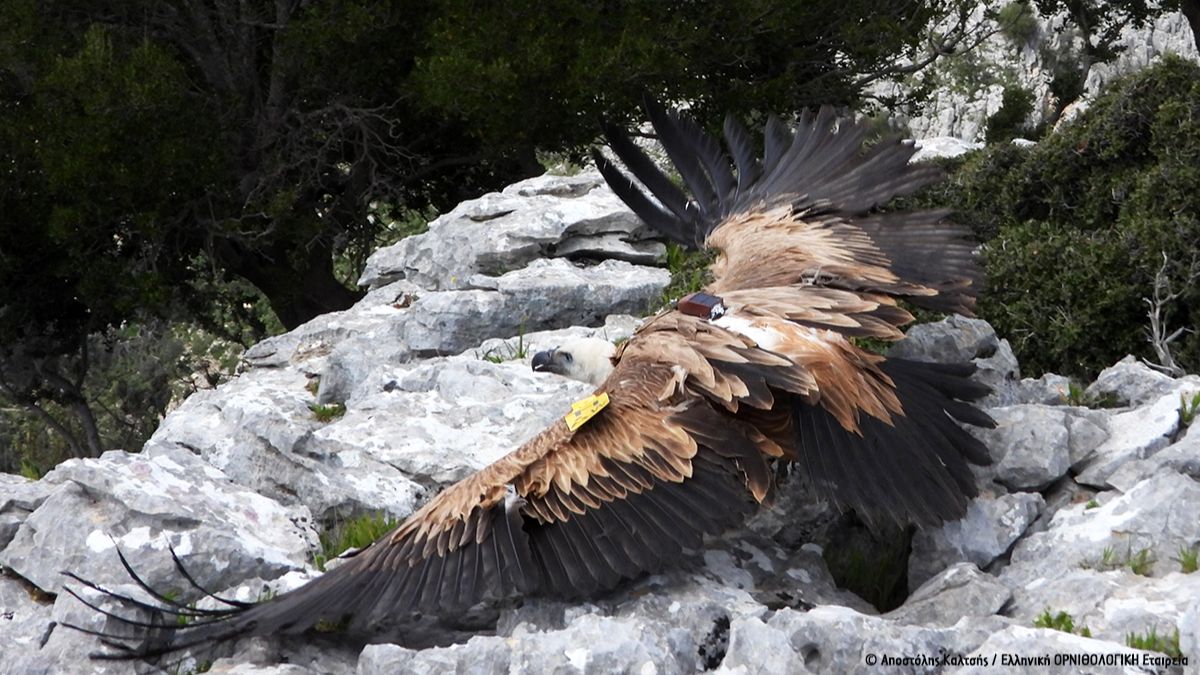
Help from Crete for the vultures of continental Greece
Yuchtas”, “Kedros” and “Myrsini” in the sky of Aetoloakarnania
Three young vultures originating from Crete were released a few days ago in Mount Arakynthos in Aetoloakarnania, as part of an action to strengthen the vulture population in continental Greece. This specific action is included in the National Action Plan for three species of vultures (Bearded Vulture, Griffon Vulture, Cinereous Vulture), implemented in the framework of the LIFE-IP 4 NATURA project under the coordination of the Hellenic Ornithological Society (HOS).
The successful implementation of the action required the cooperation of several agencies: the initial collection of the exhausted birds was carried out under the responsibility of the Museum of Natural History of Crete, which also undertook the transport of the birds to the facilities of ANIMA, the latter being responsible for the care and transport of birds to the special adaptation cage built by the NECCA Management Unit of the Messolonghi National Park and Western Central Greece Protected Areas. After a few weeks of adaptation to their new environment, the three birds were fitted with satellite transmitters by HOS, with the aim both to monitor their smooth integration into the local population, but also to collect additional information about the areas used by the vultures for feeding and perching.
The choice to release a small number of young vultures originating from Crete to continental Greece is an action that resulted from a scientific analysis of existing population data for the species in the two regions. Despite the slight population increase observed in recent years, in absolute terms the number of breeding vulture pairs in continental Greece remains critically low (less than 50 pairs), while that of Crete is in a much more favourable situation.
Based on these data and taking into account the quite successful outcome of the previous pilot releases carried out by the local former Management Agency (currently Management Unit of NECCA), the LIFE-IP 4 NATURA project continues the financing and implementation of this important action. In fact, the first data from the satellite transmitters show that, in just 10 days, the three birds have already joined the local vulture population in the Akarnanika Mountains!
In order to honor Crete’s contribution to the efforts to strengthen the continental vulture population, the three birds were named after Cretan toponyms, related to areas important for vultures: “Yuchtas” and “Kedros”, from the two mountain masses of central Crete and “Myrsini”, from the homonymous village of Sitia, on the northern slopes of Thrypti Mountain.
In addition to the involved officers of HOS and ANIMA, the release activity was also attended by the Head and officers of Messolonghi Forest Service, as well as the Coordinator and officers of the NECCA Management Unit (PAMU) of the National Park of Messolonghi and Protected Areas of Western Central Greece.
Source: Hellenic Ornithological Society
